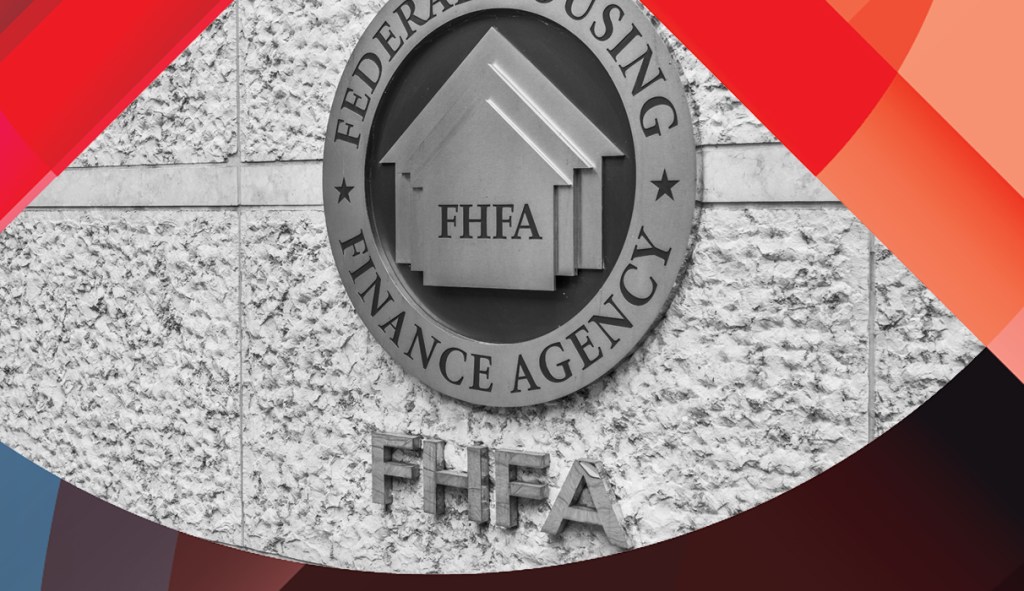
The day after Labor Day, the nation’s top housing regulator announced that its regulated entities, which control half the nation’s $11 trillion housing market, would have to come up with plans to address racial equity.
The Federal Housing Finance Agency’s decree came with a tight deadline for Fannie Mae and Freddie Mac. The two government sponsored enterprises would have less than four months to submit and implement the plans which, along with annual progress reports, the FHFA vowed to make public.
Both of the GSEs quickly chimed in with statements of support, although the terms of their conservatorship mandate their cooperation.
“Barriers to homeownership remain for people of color and other minorities,” said Hugh Frater, CEO of Fannie Mae. “With FHFA’s support, we will continue working on addressing these issues and engaging with industry partners to take concrete steps to remove them.”
Freddie Mac’s CEO, Michael DeVito, said the FHFA’s proposal “builds upon the company’s long track record of making home possible for homebuyers and renters across all markets and dimensions, including race, ethnicity, sexual orientation and ability.”
Representatives of mortgage lenders — a sector which depends on the GSEs to purchase its loans — were supportive, too.
Bob Broeksmit, the president of the Mortgage Bankers’ Association, lauded the FHFA’s proposal, which he called “comprehensive business plans to advance equity in housing.”
“We look forward to continuing to work with both FHFA and HUD, as well as Congress and other stakeholders, on policies that will promote fair, equitable, and sustainable access to homeownership for all Americans who aspire to it.”
A day after the equity plans announcement, the FHFA released statistics on the GSEs’ fair lending activities. The numbers bear out that, clearly, the GSEs trail the market when it comes to reaching underserved communities, particularly Black borrowers.
The share of mortgages Fannie Mae and Freddie Mac acquired from Black borrowers in 2020 was 4.1% and 4.0%, respectively. In contrast, the share of home purchase loans from Black borrowers in the market overall was 7.3% during the same period, per Home Mortgage Disclosure Act data.
The equity plans announcement — followed by the data showing how much the GSEs need to improve — is the latest public step the FHFA has taken to carry out the Biden administration’s agenda to further racial equity. This action could be its most substantive to date, said David Dworkin, president of the National Housing Conference.
It is particularly significant, he said, because the GSEs must now come up with measurable goals, benchmarks for success, and provide assessments of performance. While the GSEs have only until the end of the year to come up with their plans, the layout of the call for public input indicated that the “process is clearly already underway,” Dworkin said.
“In case people were wondering with all of these announcements whether it’s the real deal, this definitively answers that question,” said Dworkin.
Much to be desired
While the FHFA pushes forward on racial equity, some have pointed out that there are some matters that it has left behind.
Nikitra Bailey, senior vice president of public policy at the National Fair Housing Alliance, said she viewed the FHFA’s plan as a “positive development.”
“We’ve known for quite some time the GSEs have woefully underserved Black and brown consumers, quite frankly,” said Bailey. “They’ve just really fallen short making sure there has been access to credit in those communities.”
But there are further changes Bailey and others want to see. One thing that the mortgage industry and affordable housing advocacy sector agree on is that the limits on high-risk loans in the Preferred Stock Purchase Agreement pose a problem — especially if the GSEs are expected to meet new, ambitious affordability targets.
“I don’t know how [the GSEs] can succeed at this request for input without eliminating those elements of the PSPAs,” Dworkin said, of loan-level price adjustments and the limits on high-risk loans.
What other steps could the GSEs take now to provide financing for underserved markets?
Reintroducing pilot programs could help the GSEs finance small-balance loans, of particular importance to borrowers seeking modest homes. They could restart the pilot program abruptly halted in 2019, to finance manufactured housing with chattel loans. Some have called for the GSEs to update the credit score model in their underwriting software, to include rental and utility payments for borrowers with little or no credit history.
But Bailey is clear that taking all of these steps — to push the GSEs to fulfill their statutory obligation to serve all markets — is not just a matter of moral responsibility. Reaching untapped parts of the market makes good business sense.
“These borrowers are the future mortgage market,” said Bailey. “If they can’t access sustainable credit, existing homebuyers will not have borrowers to sell their homes to. And that could have a negative impact for older, white existing homebuyers.”
Plans left behind
The Lincoln Institute, along with other advocacy organizations, has called on the FHFA to reject its proposed Duty to Serve plans.
The Duty to Serve program, since 2017, mandates that the GSEs provide affordable housing financing to three specific underserved markets — manufactured housing, affordable housing preservation, and rural housing.
The GSEs must submit plans based on the FHFA’s Duty to Serve guidelines. But the FHFA’s proposed plan discourages the offering of new products, and the loan targets for underserved markets are “unreasonably low,” the Lincoln Institute wrote in a July comment letter.
Jim Gray, a nonresident senior fellow at the Lincoln Institute and the former director of the Duty To Serve program, said the new equity plans were an important step forward, especially since the program never specifically addressed racial equity. The equity plans help to make up for that flaw, Gray said.
Yet he voiced concern that the FHFA may have too much of a singular focus on racial equity.
“I’m a believer that FHFA and Fannie and Freddie should walk and chew gum at the same time,” Gray said.
The FHFA and the GSEs should prioritize “not only racial equity but also underserved markets,” Gray said. “For all its strengths, the proposed equity plans do nothing to address the shortcomings of the [Duty to Serve] plans released in the spring.”




